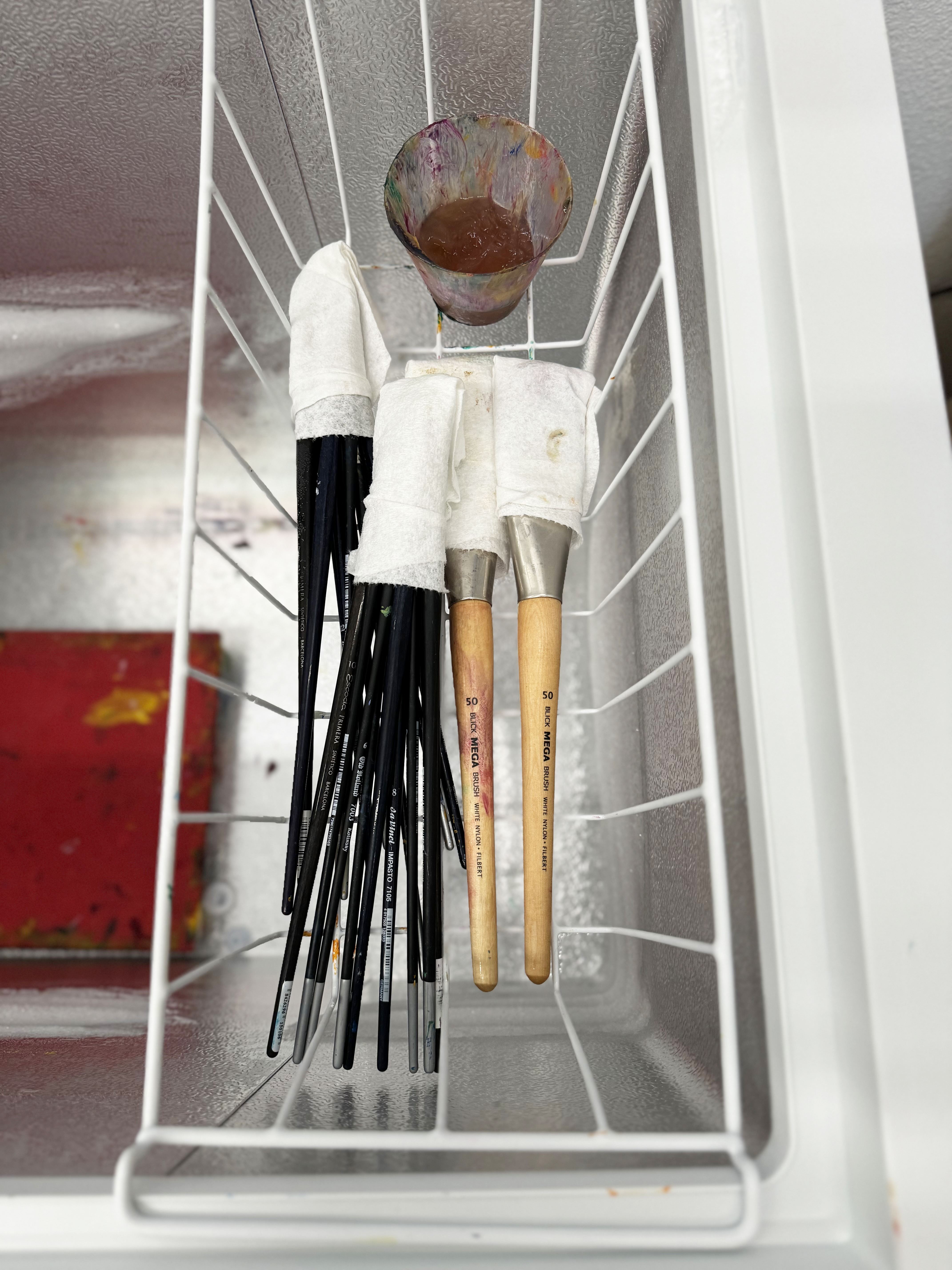Subtotal
$0
U.S. Shipping
FREE
Saved for Later
Shopping Cart
Subtotal
$0
U.S. Shipping
FREE
Saved for Later
Many would-be oil painters have avoided painting in oils because they believe oil paints are toxic. I am going to share with you how to paint in oils without toxicity.
One common misconception is that oil paints are toxic. This is incorrect as long as they are used correctly. Oil paints' beautiful colors come from metallic chemicals such as cadmium, lead, and cobalt. However, as long as you do not inhale or eat the paint, the metallic elements will not enter your body. The molecules of oil paint are too large to be absorbed directly through your skin.
So, how are oil paints toxic?
The toxicity is caused by using turpentine or Turpenoid (odorless turpentine). Many oil painters use turpentine and mineral spirits to thin their paint and clean their brushes. Turpentine is highly volatile (even if you can’t smell it, like with Turpenoid) and affects the digestive and nervous systems.
I am going to tell you how I paint with oils without using any volatile substances. First, to thin my oil paints and clean my brush in between paint colors, I use linseed oil. By dipping my brush into a small container of linseed oil and wiping it clean with a paper towel, I can get my brush almost as clean as when it was brand new. Linseed oil can also be used to create washes (thin, transparent layers of paint).
My favorite brand of linseed oil is Rublev Colours’ Pale Drying Oil. I also use Winsor & Newton’s Drying Linseed Oil. If you want your painting to take longer to dry, I recommend Gamblin’s Safflower Oil.
When I am done painting for the day, I wrap my brushes tightly in a paper towel and place them in the freezer, along with my entire paint palette. My brushes last for weeks without cleaning by storing them in the freezer at night.

When I do clean my brushes, I never use turpentine. Instead, I use The Masters Brush Cleaner. This large block of soap comes in a 24 oz classroom tub, and it will last for a year or longer. The same brand also makes a fantastic hand soap that gets every bit of oil paint off your hands without using toxic chemicals. (And if you get oil paint on your clothes, even if it dries, you can get it off with Kiss-Off Stain Remover sticks.)
As an oil painter, the only time I must use toxic chemicals is when I varnish my paintings. Damar varnish is made from tree resin, but it contains volatile hydrocarbons.
My paintings are varnished in a heavily ventilated room next to my painting studio; however, you can varnish at home by taking your painting out of doors or in the garage with all the doors wide open.
To sum up, you don’t have to expose yourself to toxic chemicals when you paint in oils. Avoid turpentine and use linseed oil instead as your painting medium. Clean your brushes with natural soap or store your brushes in the freezer. Use Masters Soap to wash your hands. I hope this opens the door to exploring oil painting as a medium, and I wish you happy painting!

About Erin
ERIN HANSON has been painting in oils since she was 8 years old. As a teenager, she apprenticed at a mural studio where she worked on 40-foot-long paintings while selling art commissions on the side. After being told it was too hard to make a living as an artist, she got her degree in Bioengineering from UC Berkeley. Afterward, Erin became a rock climber at Red Rock Canyon, Nevada. Inspired by the colorful scenery she was climbing, she decided to return to her love of painting and create one new painting every week.
She has stuck to that decision, becoming one of the most prolific artists in history, with over 3,000 oil paintings sold to eager collectors. Erin Hanson’s style is known as "Open Impressionism" and is taught in art schools worldwide. With millions of followers, Hanson has become an iconic, driving force in the rebirth of impressionism, inspiring thousands of other artists to pick up the brush.